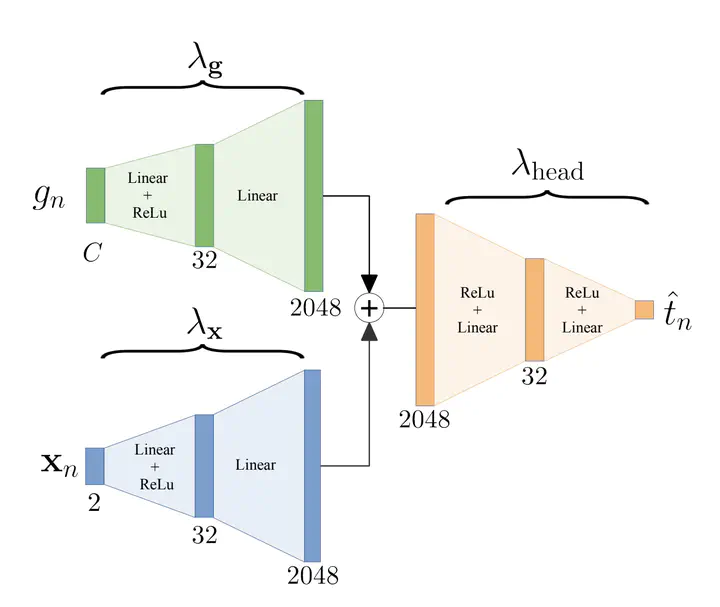
Abstract
Guided super-resolution is a unifying framework for several computer vision tasks where the inputs are a lowresolution source image of some target quantity (e.g., perspective depth acquired with a time-of-flight camera) and a high-resolution guide image from a different domain (e.g., a grey-scale image from a conventional camera); and the target output is a high-resolution version of the source (in our example, a high-res depth map). The standard way of looking at this problem is to formulate it as a super-resolution task, i.e., the source image is upsampled to the target resolution, while transferring the missing high-frequency details from the guide. Here, we propose to turn that interpretation on its head and instead see it as a pixel-to-pixel mapping of the guide image to the domain of the source image. The pixel-wise mapping is parametrised as a multi-layer perceptron, whose weights are learned by minimising the discrepancies between the source image and the downsampled target image. Importantly, our formulation makes it possible to regularise only the mapping function, while avoiding regularisation of the outputs; thus producing crisp, naturallooking images. The proposed method is unsupervised, using only the specific source and guide images to fit the mapping. We evaluate our method on two different tasks, superresolution of depth maps and of tree height maps. In both cases we clearly outperform recent baselines in quantitative comparisons, while delivering visually much sharper outputs.